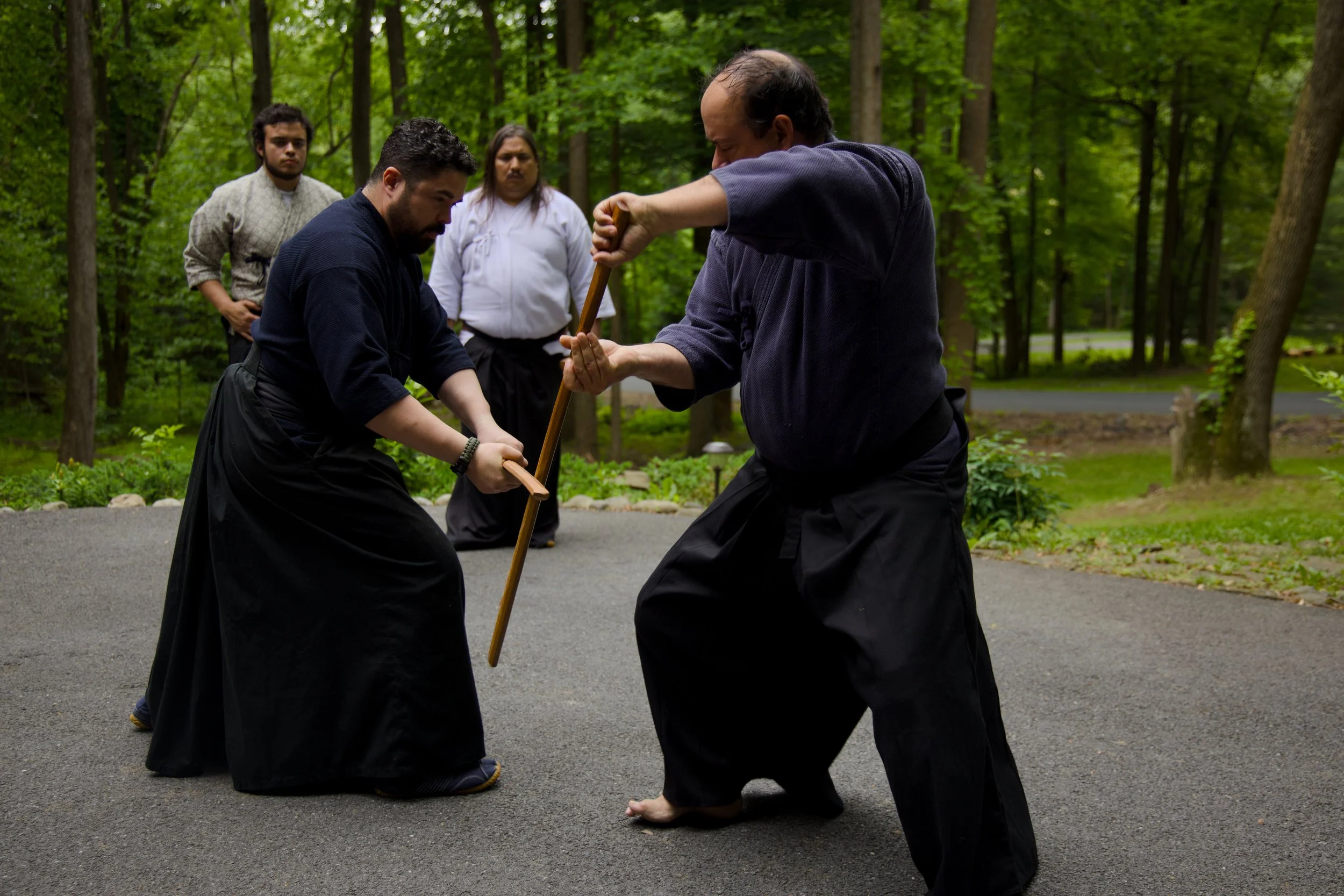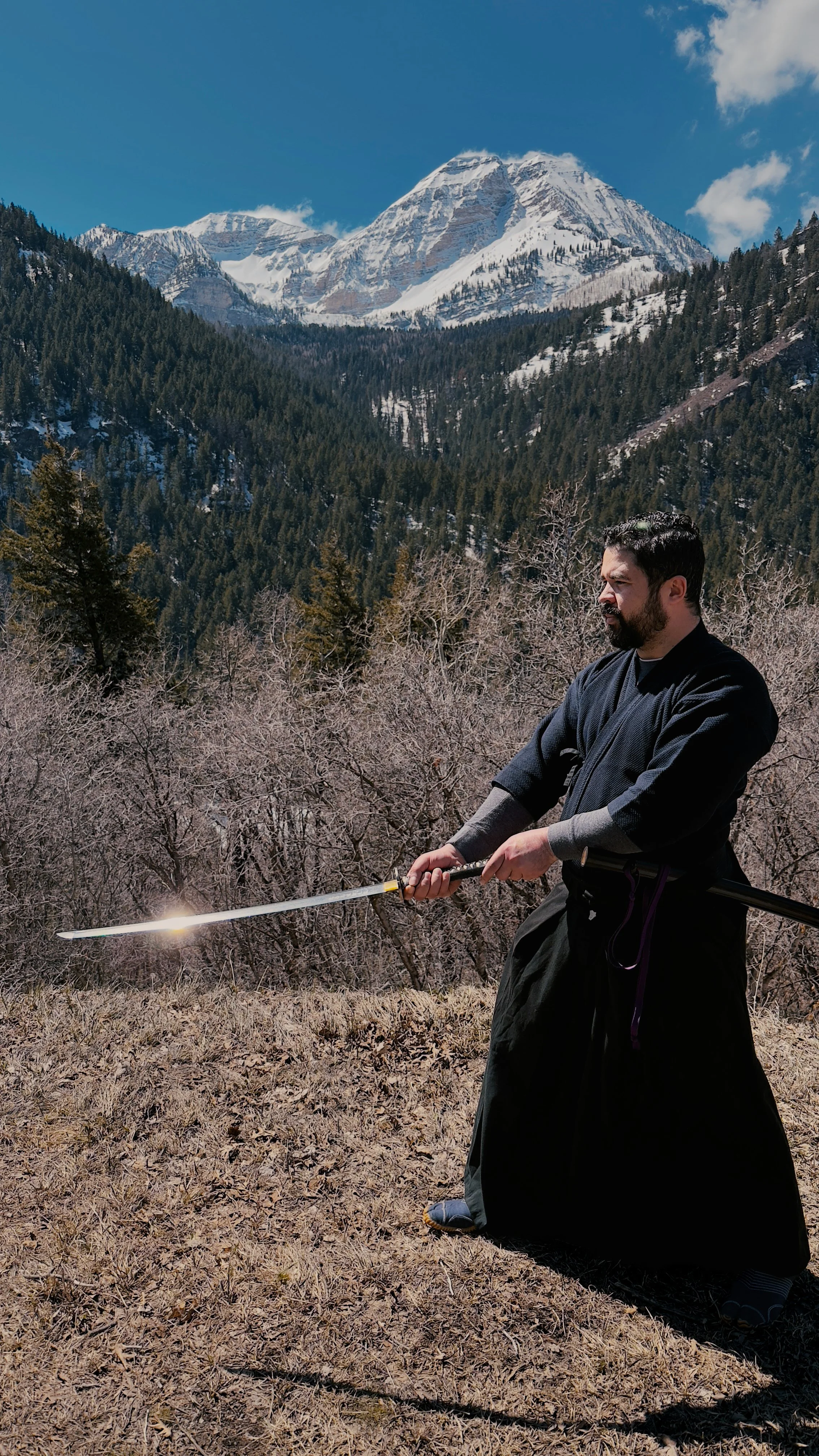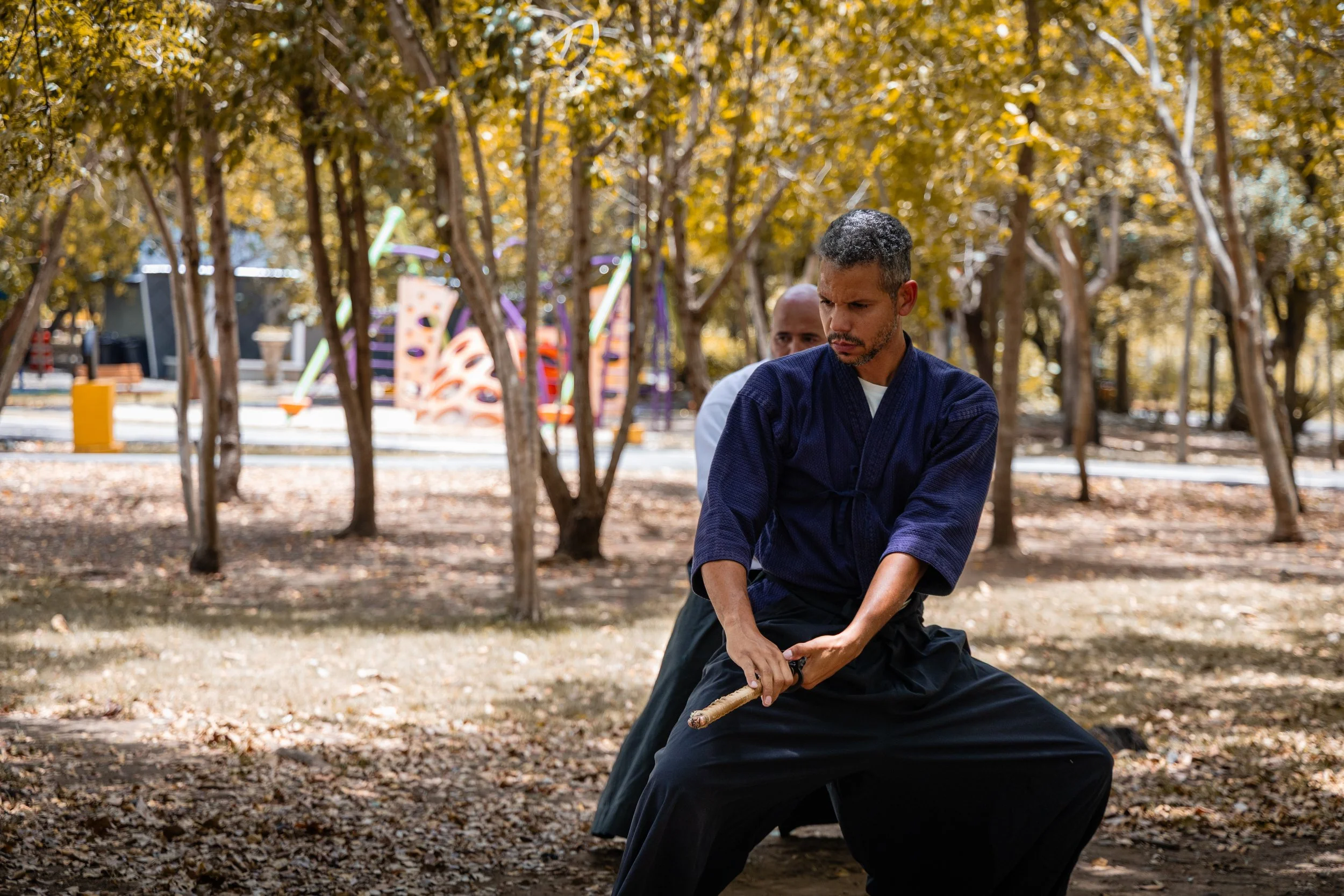
Iaidō - Kenjutsu
At Hakuhi Ryu we focus on preserving and training the traditional ways of Japanese swordsmanship by practicing katas as well as their combat applications and techniques.
Iaidō
Iaidō will develop your sword drawing skills from a sitting position as well as standing. The practice of this martial art requires a solemn spirit, extreme concentration, and skill. Every motion, such as the movements of the arms, legs and body, corresponds to the offensive motions of the opponent, and it is of utmost importance that a person follow the rules of discipline that have been carefully and thoroughly applied.
Kenjutsu
Originating with the Samurai class of Japan, Kenjutsu means "the method of" or "the technique of" the sword. It consists of actually battling with swords, and the main weapon used is the Katana, although wooden bokkens can be used to reduce the chances of serious injury.
Battōjutsu
Battōjutsu is unique in the sense that it combines both sword drawing and counterattacking. It involves drawing one's sword and using it to perform a counterattack and is more likely to involve several cuts after the draw is complete. Battōjutsu often engages in cutting practice called “tameshigiri”
Dojo Mission and Principles - We strive to live by some of the principles and tenets of Bushido.
Righteousness 正義
Do what is right, even if it’s difficult.
Courage 勇気
This is not just the absence of fear, but the ability to act in the face of danger
Benevolence 慈悲
Show kindness and compassion to others, even to your enemies. Do not be boastful, do not be arrogant.
Respect 尊敬
Show respect and be considerate of others.
Self-Control 自制心
Control your emotions, even in the face of provocation.
Honesty 正直さ
Be truthful and trustworthy in your dealings with others and with yourself.
Honor 名誉
Uphold your word and your commitments, even at great personal cost.
Other rules and etiquette
-
Students who arrive after class has started must wait next to the tatami mat until the teacher (sensei) gives them permission to join the class.
-
Refrain from using foul language.
-
This is important for everyone to be able to focus on the instruction. And to respect everyone’s time and effort.
-
This can be a distraction and can also be dangerous if someone chokes.
-
No cell phones or other electronic devices during class. These can be a distraction and can also be dangerous if they fall and break.
-
Be polite and respectful to your fellow students. Bullying, either physical or verbal is not tolerated.
-
Do not be afraid to ask questions, but wait for the appropriate time to do so.
-
No shoes on the Tatami (Floor mat or training space).
-
You should wear comfortable clothing that allows you to move freely. You should also remove any jewelry or other items that could be dangerous.
-
This shows respect for yourself and your training partners.
-
Bow upon entering and exiting the dojo. This is a sign of respect for your instructor and your fellow students.
-
Address your instructor as "Sensei." This is a sign of respect.
-
This shows that you are interested in learning and that you respect their authority.
-
Help to clean up after class. This shows that you are responsible and that you care about your training environment.

Suggestions to get the most out of your training:
Be prepared to train hard. Kenjutsu is a physically and mentally demanding activity.
Be prepared to push yourself and to learn from your mistakes.
Be humble and willing to learn. Kenjutsu is a lifelong journey and there is always more to learn.
Be patient. It takes time and practice to learn Kenjutsu. Don't get discouraged if you don't see results immediately.
Be supportive of your fellow students. Be there to cheer on your fellow students and to help them when they need it.
Be positive. A positive attitude will help you to learn and to grow as a person.
Have fun! Kenjutsu should be enjoyable and rewarding.



